NASA, BBC News, Veritasium, Live Science, and Ocean Action News
May 15-16, 2022 Total Lunar Eclipse: Shadow View
Visualizations by Ernie Wright Released on March 24, 2022
 Eastern Daylight Time (EDT). The Moon moves right to left, passing through the penumbra and umbra, leaving in its wake an eclipse diagram with the times at various stages of the eclipse.
Eastern Daylight Time (EDT). The Moon moves right to left, passing through the penumbra and umbra, leaving in its wake an eclipse diagram with the times at various stages of the eclipse.
Both movies and high-resolution still images are available for Eastern (above), Central, Mountain, and Pacific Daylight Time, as well as UTC. Also see the visibility map and Dial-a-Moon for this eclipse.
On May 16, 2022 (the night of May 15 in the Western Hemisphere), the Moon enters the Earth’s shadow, creating a total lunar eclipse, the first since May of 2021. This animation shows the changing appearance of the Moon as it travels into and out of the Earth’s shadow, along with times at various stages.
The penumbra is the part of the Earth’s shadow where the Sun is only partially covered by the Earth. The umbra is where the Sun is completely hidden. The Moon’s appearance isn’t affected much by the penumbra. The real action begins when the Moon starts to disappear as it enters the umbra at about 10:28 p.m. EDT on the 15th. An hour later, entirely within the umbra, the Moon is a ghostly copper color. Totality lasts for an hour and a half before the Moon begins to emerge from the central shadow. Throughout the eclipse, the Moon is moving throught the constellation Libra.
For more information, please following the link:
https://svs.gsfc.nasa.gov/4980
May 15-16, 2022 Total Lunar Eclipse: Telescopic View
Visualizations by Ernie Wright Released on March 24, 2022
| Time | Monday, May 16, 2022, 04:11:30 UTC |
| Eclipse | 100.0% |
| Diameter | 1979.2 arcseconds |
| Distance | 362131 km (28.39 Earth diameters) |
| J2000 Right Ascension, Declination | 15h 30m 12s, 19° 15′ 08″S |
| Sublunar Latitude, Longitude | 19.328°S 63.865°W |
Also see the shadow diagram and visibility map for this eclipse.
The total lunar eclipse of May 16, 2022 (the night of May 15 in the Western Hemisphere) occurs near perigee, making the Moon appear about 7% larger than average. This eclipse is ideally timed for viewing from most of the Western Hemisphere, including the Lower 48 of the United States. The total phase occurs near moonset in Africa and western Europe.
The sublunar point, the last line of the table above, is the point on the Earth’s surface where the Moon is directly overhead. It’s also the center of the hemisphere of the Earth where the eclipse is visible. The closer you are to that location, the higher the Moon will be in your sky. The eclipse percentage in the table is the fraction of the Moon covered by the Earth’s umbra, the part of its shadow in which the Sun is completely blocked. The part of the shadow in which the Sun is only partially blocked is called the penumbra.
The animations on this page run from 1:00:00 to 7:29:50 UTC, which is also the valid range of times for this Dial-a-Moon. The exposure setting of the virtual camera changes around totality in order to capture the wide dynamic range of the eclipse. The parts of the Moon outside the umbra during the partial phases are almost as bright as an ordinary full moon, making the obstructed parts appear nearly black. But during totality, our eyes adjust and reveal a range of hues painted on the Moon by all of Earth’s sunrises and sunsets.
All phases of a lunar eclipse are safe to view, both with your naked eye and an unfiltered telescope.
For more information, please following the link:
https://svs.gsfc.nasa.gov/4979
When the moon passes directly between the sun and Earth, a solar eclipse takes place. (NEVER look at the sun during any type of solar eclipse! Looking at the sun is dangerous. It can damage your eyes.)
When only a part of the moon enters Earth’s shadow, the event is called a partial lunar eclipse. Image Credit: Brad Riza
A total lunar eclipse happens when the whole moon enters Earth’s shadow. Some sunlight still reaches the moon, but first it goes through Earth’s atmosphere. The atmosphere filters out most of the sun’s blue light, so the moon looks red.
In this time-lapsed image, the moon changes color as it moves through Earth’s shadow. Image Credit: Fred Espenak
When the moon passes directly between the sun and Earth, a solar eclipse takes place. (NEVER look at the sun during any type of solar eclipse! Looking at the sun is dangerous. It can damage your eyes.)
A partial solar eclipse takes place when the sun, moon and Earth are not exactly lined up. (NEVER look at the sun during any type of solar eclipse! Looking at the sun is dangerous. It can damage your eyes.)
May 12, 2022
For a total eclipse to take place, the sun, moon and Earth must be in a direct line. During a total solar eclipse, the moon blocks the sun’s glare, making the sun’s corona more visible. (NEVER look at the sun during any type of solar eclipse! Looking at the sun is dangerous. It can damage your eyes.) Image Credit: Steve Albers, Dennis DiCicco and Gary Emerson
An annular eclipse happens when the moon is farthest from Earth. Because the moon is farther away from Earth, it seems smaller and does not block the entire view of the sun. (NEVER look at the sun during any type of solar eclipse! Looking at the sun is dangerous. It can damage your eyes.) Image Credit: Stefan Seip
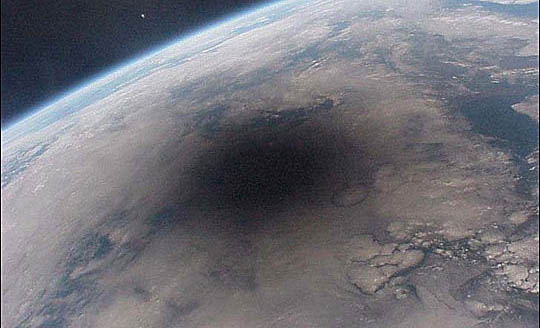 Moon’s Shadow on Earth During Solar Eclipse
Moon’s Shadow on Earth During Solar Eclipse
During a solar eclipse, the moon casts a large shadow onto Earth’s surface. Image Credit: Centre National d’Etudes Spatiales (CNES)
During an eclipse, two shadows are cast. The first is called the umbra (UM bruh). This shadow gets smaller as it goes away from the sun. It is the dark center of the eclipse shadow. The second shadow is called the penumbra (pe NUM bruh). The penumbra gets larger as it goes away from the sun.
For more information, please following the link:
Watch a Total Lunar Eclipse (NASA Science Live)
Streamed live 2 hours ago, 5.16.2022 NASA
Go outside with NASA and watch the total lunar eclipse! On the evening of May 15, Earth will pass between the Sun and the Moon, blocking sunlight and casting a shadow on the lunar surface. Starting at 9:32 p.m. EDT (1:32 UTC on May 16), people with clear skies in the Americas, Europe, and parts of Africa will begin to see the Moon get bathed in the red glow of every sunrise and sunset refracted through Earth’s atmosphere. Totality will occur at 12:12 a.m. EDT on May 16 (4:12 UTC). Join NASA experts to learn about this incredible natural phenomenon, look through telescope views across the world, and hear about plans to return humans to the lunar surface with the Artemis program. Have questions? Ask them in our live chat. https://nasa.gov/moon
AXiOS AM & PM: ![]() Mike Allen <mike@axios.com> May 16, 2022
Mike Allen <mike@axios.com> May 16, 2022
- 1,000 words
This combination of photos shows the moon in various stages of a total lunar eclipse during last night’s first blood moon of the year, as seen from Temple City, Calif.
- The moon was bathedin reflected red and orange hues of Earth’s sunsets and sunrises for about 90 minutes — one of the longest totalities of the decade.
- Parting shot – AXIOS 5.16.2022 PM
These photos show the Moon last night during a full lunar eclipse (upper left) … and at various stages as it emerges from Earth’s shadow — as seen near Moscow, Idaho.
The orange results from the Moon passing into Earth’s shadow.
Earth from Orbit: NOAA Debuts First Imagery from GOES-18
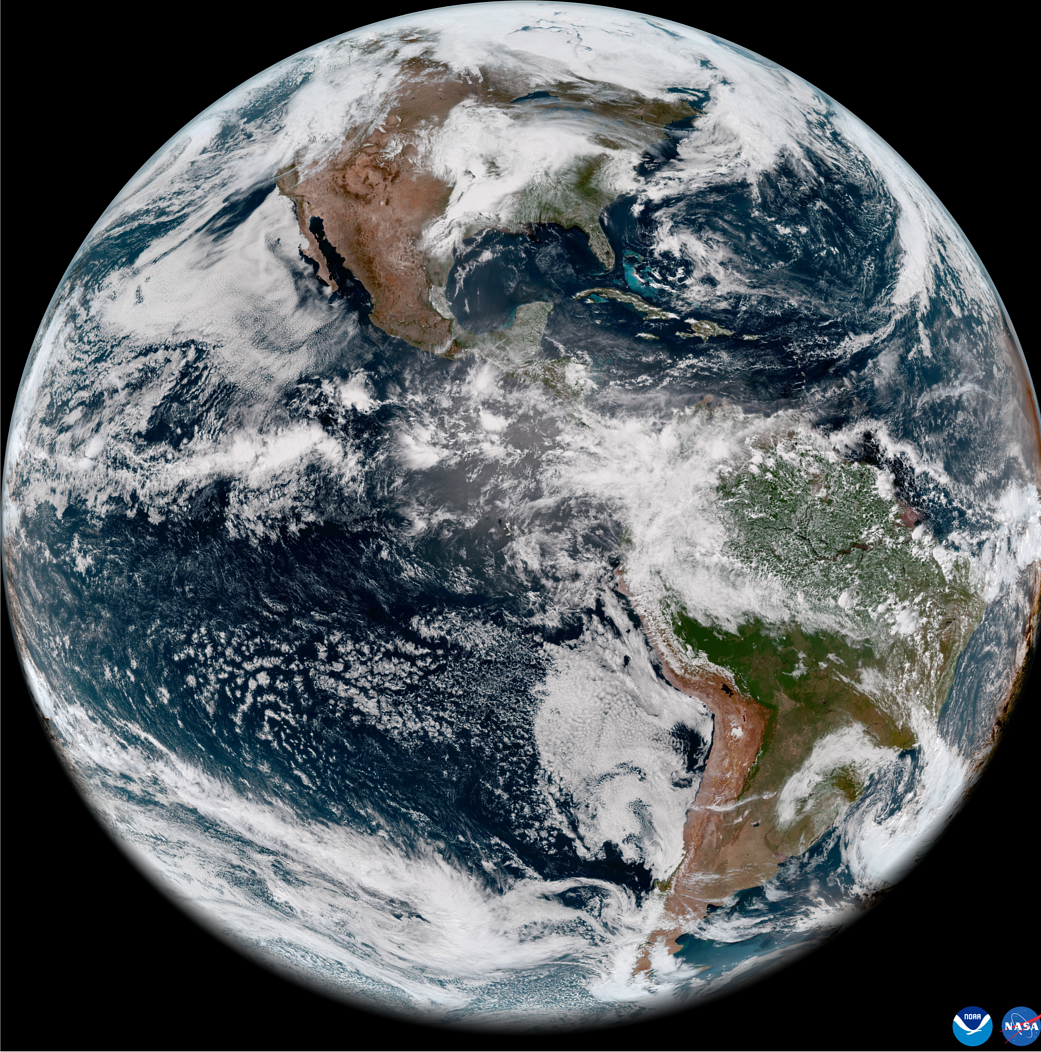 On May 11, 2022, the National Oceanic and Atmospheric Administration, or NOAA, shared the first images of the Western Hemisphere from its Geostationary Operational Environmental Satellite-T (GOES-T). Later designated GOES-18, the satellite’s Advanced Baseline Imager (ABI) instrument recently captured stunning views of Earth.
On May 11, 2022, the National Oceanic and Atmospheric Administration, or NOAA, shared the first images of the Western Hemisphere from its Geostationary Operational Environmental Satellite-T (GOES-T). Later designated GOES-18, the satellite’s Advanced Baseline Imager (ABI) instrument recently captured stunning views of Earth.
Launched by NASA on March 1, GOES-18 lifted off at 4:38 p.m. EST from Cape Canaveral Space Force Station’s Space Launch Complex 41 in Florida. The ABI views Earth with 16 different channels, each measuring energy at different wavelengths along the electromagnetic spectrum to obtain information about Earth’s atmosphere, land, and ocean.
Learn more: GOES Overview and History
Image Credit: NOAA
Last Updated: May 12, 2022
Editor: Yvette Smith
Tags: Earth, Image of the Day
May 4, 2022
A Sunrise Across Our World
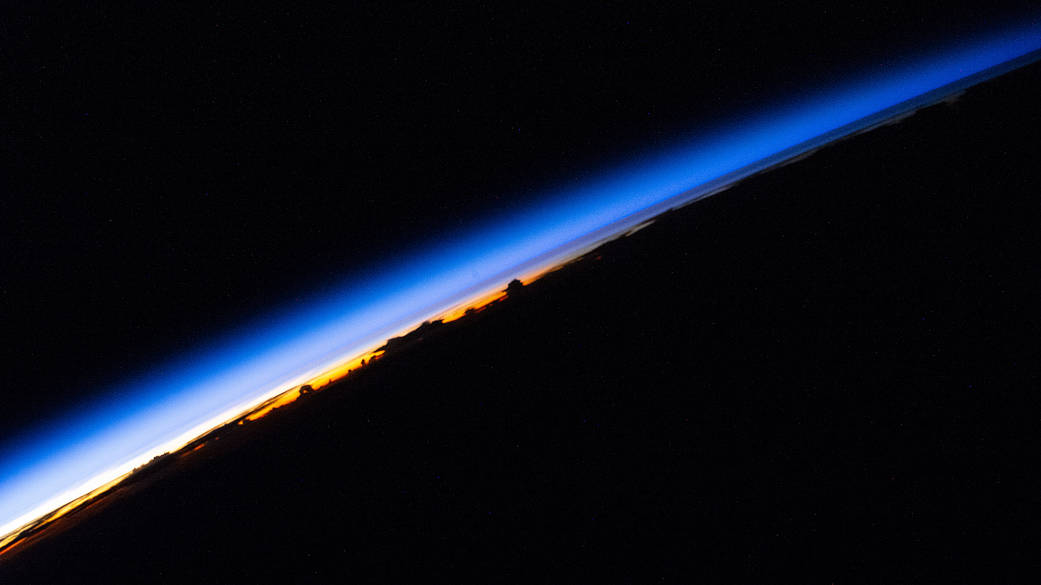
The crew aboard the International Space Station has a window on Planet Earth. In this image an orbital sunrise beams across Earth’s horizon revealing silhouetted clouds above the South China Sea.
Every 24 hours, the space station makes 16 orbits of Earth, traveling through 16 sunrises and sunsets.
Learn More
International Space Station Facts and Figures
#EarthDay
Image Credit: NASA
Last Updated: Apr 22, 2022
Editor: Yvette Smith
Tags: Earth, Image of the Day
Apr 21, 2022
Astronaut Victor Glover: Inspiring Washington Area Students
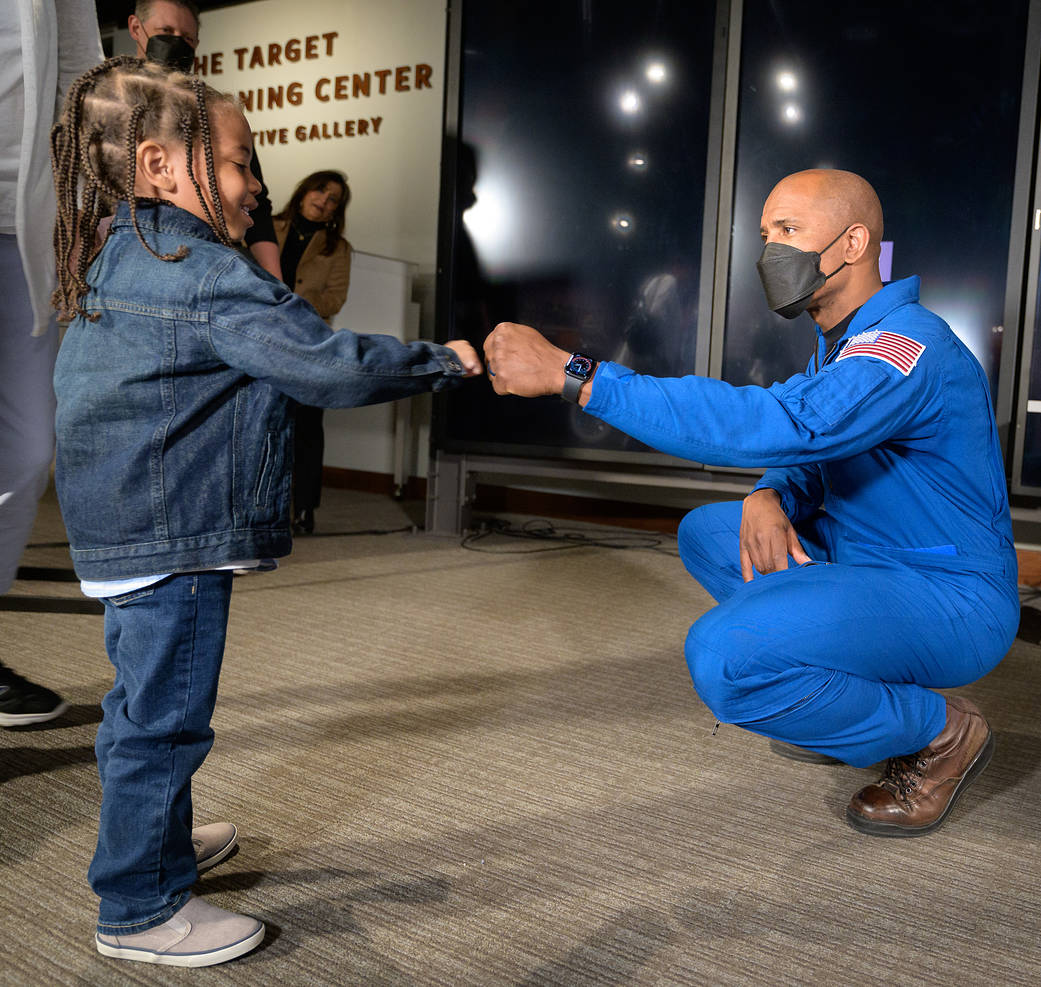
NASA astronaut Victor Glover greets one of his youngest fans, 3-year-old Ezra Garrel, with a fist bump at the conclusion of an educational event for students in the Washington, DC area, Thursday, April 28, 2022, at the National Museum of African American History and Culture in Washington. Glover most recently served as pilot and second-in-command on the Crew-1 SpaceX Crew Dragon, named Resilience. The long-duration mission aboard the International Space Station returned to Earth on May 2, 2021.
Image Credit: NASA/Bill Ingalls
Last Updated: Apr 29, 2022
Editor: Yvette Smith
Apr 26, 2022
Tags: Humans in Space, Image of the Day
An Angel Wing in Space
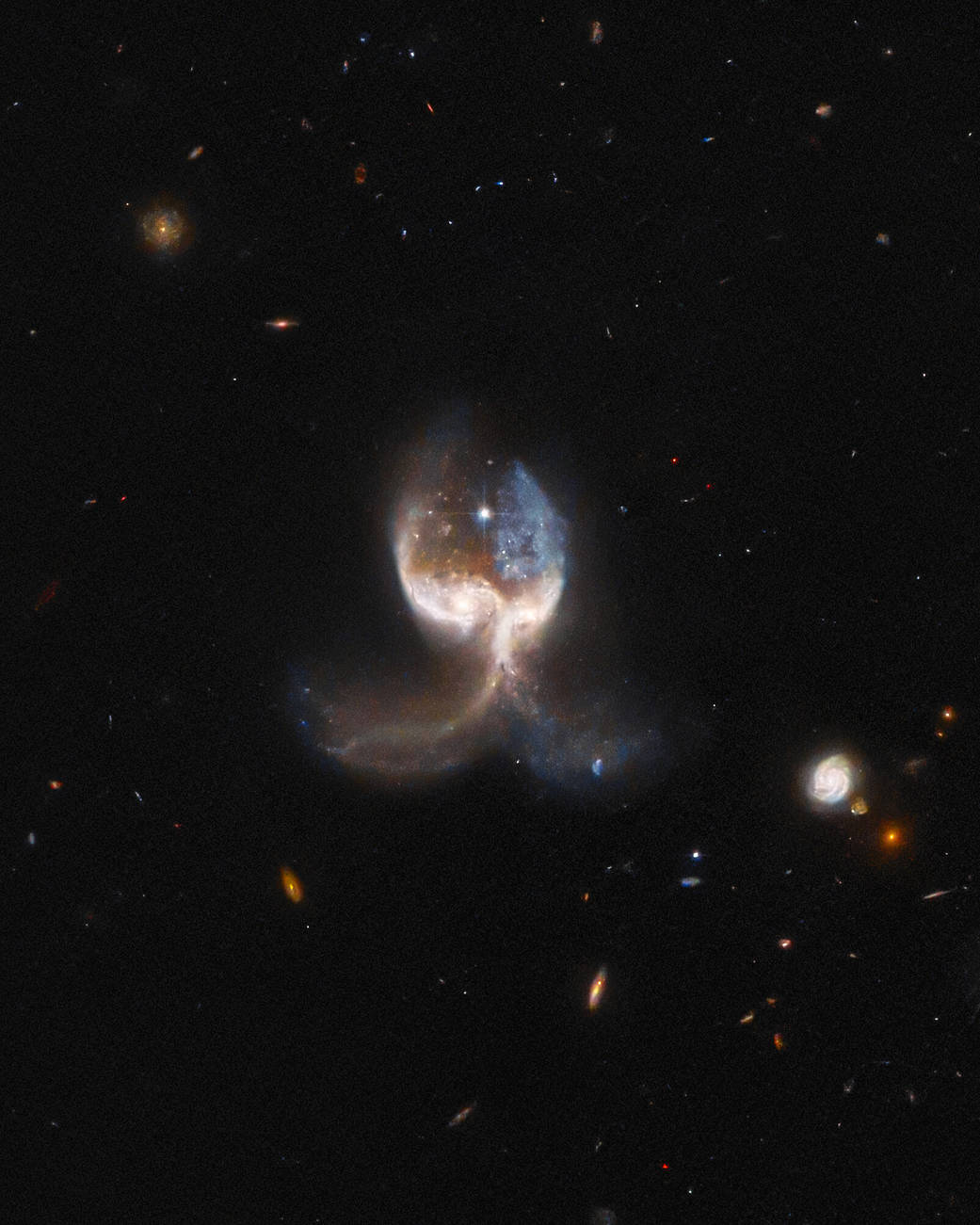
This Hubble Space Telescope image features two merging galaxies in the VV-689 system, nicknamed the Angel Wing. Unlike chance alignments of galaxies, which only appear to overlap when viewed from our vantage point on Earth, the two galaxies in VV-689 are in the midst of a collision. The galactic interaction has left the VV-689 system almost completely symmetrical, giving the impression of a vast set of galactic wings.
“Zoo Gems,” interesting galaxies from the Galaxy Zoo citizen science project is a crowdsourced program and relies on hundreds of thousands of volunteers to classify galaxies and help astronomers wade through a deluge of data from robotic telescopes. In the process, volunteers discovered a gallery of weird and wonderful galaxy types, some not previously studied. A similar, project called Radio Galaxy Zoo: LOFAR is using the same crowdsourcing approach to locate supermassive black holes in distant galaxies.
Image Credit: ESA/Hubble & NASA, W. Keel; Acknowledgment: J. Schmidt
Text Credit: ESA
Last Updated: Apr 26, 2022
Editor: Yvette Smith
Tags: Galaxies, Image of the Day
Happy 32nd Birthday to Hubble!
 We’re celebrating the Hubble Space Telescope‘s 32nd birthday with a stunning look at an unusual close-knit collection of five galaxies, called The Hickson Compact Group 40.
We’re celebrating the Hubble Space Telescope‘s 32nd birthday with a stunning look at an unusual close-knit collection of five galaxies, called The Hickson Compact Group 40.
This eclectic galaxy grouping includes three spiral-shaped galaxies, an elliptical galaxy, and a lenticular (lens-like) galaxy. Somehow, these different galaxies crossed paths in their evolution to create an exceptionally crowded and eclectic galaxy sampler.
Hubble’s 32nd Anniversary: An Eclectic Galaxy Grouping (video)
Image Credit: NASA, ESA, STScI; Image Processing: Alyssa Pagan (STScI)
Last Updated: Apr 21, 2022
Editor: Yvette Smith
Tags: Galaxies, Image of the Day
Black Holes Are Hard to Find
 Black holes are hard to find. They have such strong gravity that light can’t escape them, so scientists must rely on clues from their surroundings to find them.
Black holes are hard to find. They have such strong gravity that light can’t escape them, so scientists must rely on clues from their surroundings to find them.
When a star weighing more than 20 times the Sun runs out of fuel, it collapses into a black hole. Scientists estimate that there are tens of millions of these black holes dotted around the Milky Way, but so far we’ve only identified a few dozen.
This image from 2001 is an artist’s impression of a black hole accretion disk. Around many black holes is an accretion disk of material emitting energy as it falls into the black hole.
Image Credit: XMM-Newton, ESA, NASA
Last Updated: May 4, 2022
Editor: Yvette Smith
Tags: Black Holes, Image of the Day
Apr 29, 2022
Black Hole Image Makes History; NASA Telescopes Coordinated Observations
A black hole and its shadow have been captured in an image for the first time, a historic feat by an international network of radio telescopes called the Event Horizon Telescope (EHT). EHT is an international collaboration whose support in the U.S. includes the National Science Foundation.
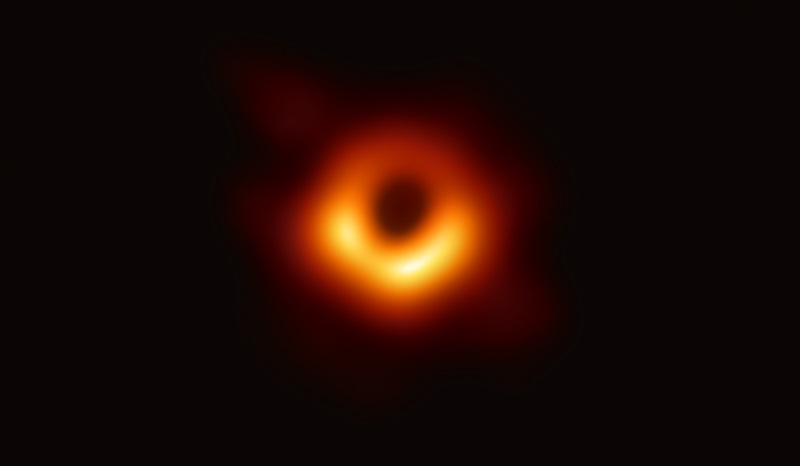 Using the Event Horizon Telescope, scientists obtained an image of the black hole at the center of galaxy M87, outlined by emission from hot gas swirling around it under the influence of strong gravity near its event horizon.
Using the Event Horizon Telescope, scientists obtained an image of the black hole at the center of galaxy M87, outlined by emission from hot gas swirling around it under the influence of strong gravity near its event horizon.
Credits: Event Horizon Telescope collaboration et al.
A black hole is an extremely dense object from which no light can escape. Anything that comes within a black hole’s “event horizon,” its point of no return, will be consumed, never to re-emerge, because of the black hole’s unimaginably strong gravity. By its very nature, a black hole cannot be seen, but the hot disk of material that encircles it shines bright. Against a bright backdrop, such as this disk, a black hole appears to cast a shadow.
The stunning new image shows the shadow of the supermassive black hole in the center of Messier 87 (M87), an elliptical galaxy some 55 million light-years from Earth. This black hole is 6.5 billion times the mass of the Sun. Catching its shadow involved eight ground-based radio telescopes around the globe, operating together as if they were one telescope the size of our entire planet.
“This is an amazing accomplishment by the EHT team,” said Paul Hertz, director of the astrophysics division at NASA Headquarters in Washington. “Years ago, we thought we would have to build a very large space telescope to image a black hole. By getting radio telescopes around the world to work in concert like one instrument, the EHT team achieved this, decades ahead of time.”
To complement the EHT findings, several NASA spacecraft were part of a large effort, coordinated by the EHT’s Multiwavelength Working Group, to observe the black hole using different wavelengths of light. As part of this effort, NASA’s Chandra X-ray Observatory, Nuclear Spectroscopic Telescope Array (NuSTAR) and Neil Gehrels Swift Observatory space telescope missions, all attuned to different varieties of X-ray light, turned their gaze to the M87 black hole around the same time as the EHT in April 2017. NASA’s Fermi Gamma-ray Space Telescope was also watching for changes in gamma-ray light from M87 during the EHT observations. If EHT observed changes in the structure of the black hole’s environment, data from these missions and other telescopes could be used to help figure out what was going on.
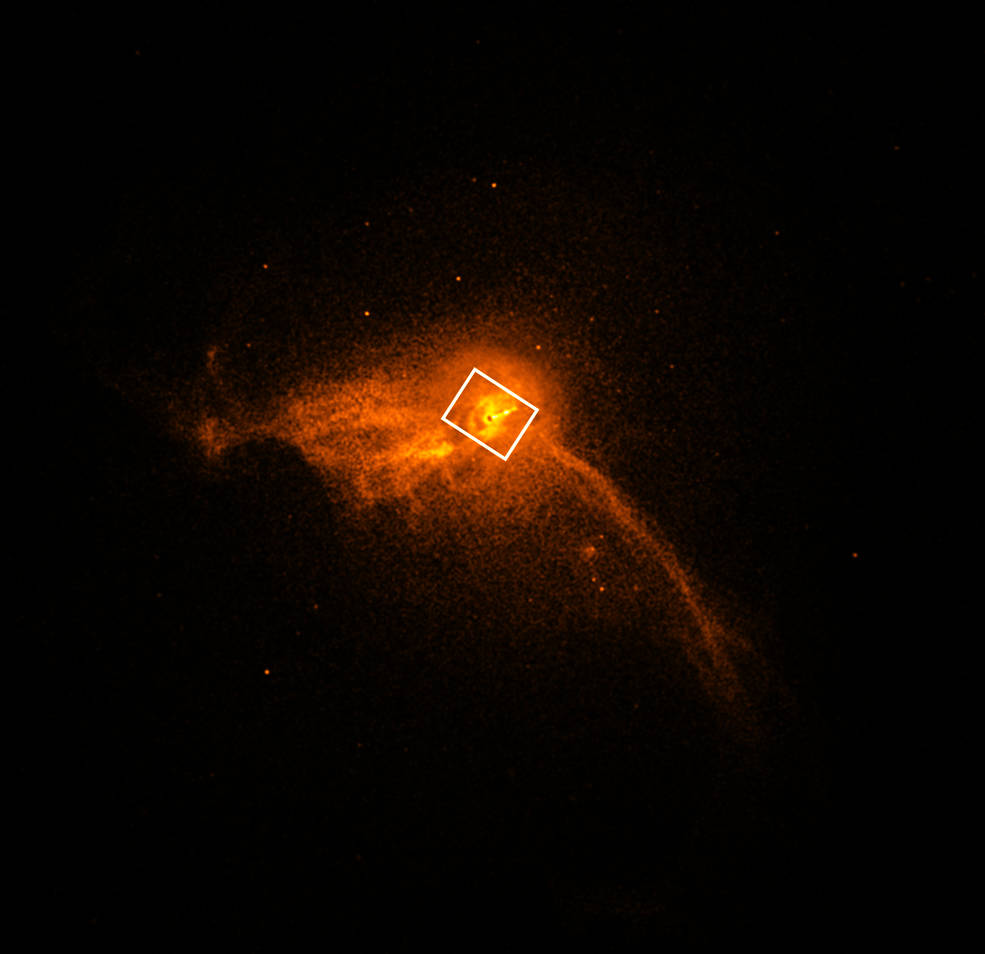 Chandra X-ray Observatory close-up of the core of the M87 galaxy.
Chandra X-ray Observatory close-up of the core of the M87 galaxy.
Credits: NASA/CXC/Villanova University/J. Neilsen
While NASA observations did not directly trace out the historic image, astronomers used data from NASA’s Chandra and NuSTAR satellites to measure the X-ray brightness of M87’s jet. Scientists used this information to compare their models of the jet and disk around the black hole with the EHT observations. Other insights may come as researchers continue to pore over these data.
There are many remaining questions about black holes that the coordinated NASA observations may help answer. Mysteries linger about why particles get such a huge energy boost around black holes, forming dramatic jets that surge away from the poles of black holes at nearly the speed of light. When material falls into the black hole, where does the energy go?
“X-rays help us connect what’s happening to the particles near the event horizon with what we can measure with our telescopes,” said Joey Neilsen, an astronomer at Villanova University in Pennsylvania, who led the Chandra and NuSTAR analysis on behalf of the EHT’s Multiwavelength Working Group.
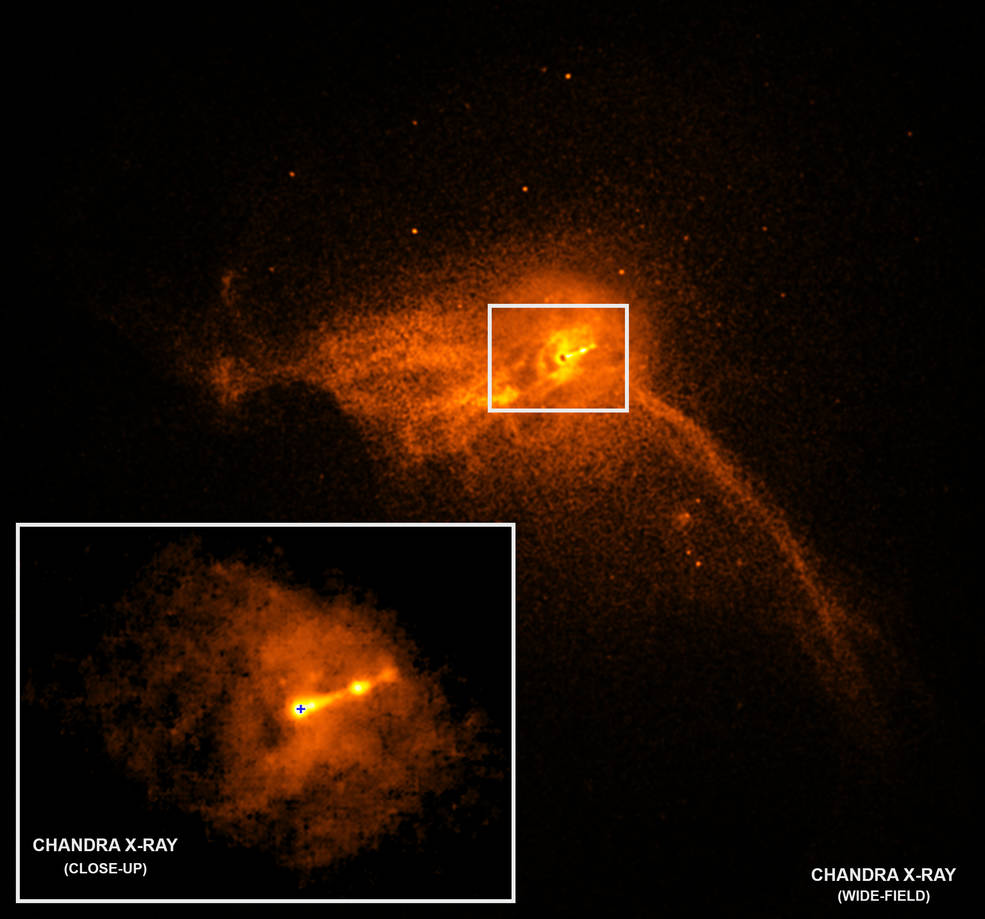 Chandra X-ray Observatory close-up of the core of the M87 galaxy.
Chandra X-ray Observatory close-up of the core of the M87 galaxy.
Credits: NASA/CXC/Villanova University/J. Neilsen
NASA space telescopes have previously studied a jet extending more than 1,000 light-years away from the center of M87. The jet is made of particles traveling near the speed of light, shooting out at high energies from close to the event horizon. The EHT was designed in part to study the origin of this jet and others like it. A blob of matter in the jet called HST-1, discovered by Hubble astronomers in 1999, has undergone a mysterious cycle of brightening and dimming.
Chandra, NuSTAR, Swift and Fermi, as well as NASA’s Neutron star Interior Composition Explorer (NICER) experiment on the International Space Station, also looked at the black hole at the center of our own Milky Way galaxy, called Sagittarius A*, in coordination with EHT.
Getting so many different telescopes on the ground and in space to all look toward the same celestial object is a huge undertaking in and of itself, scientists emphasize.
“Scheduling all of these coordinated observations was a really hard problem for both the EHT and the Chandra and NuSTAR mission planners,” Neilsen said. “They did really incredible work to get us the data that we have, and we’re exceedingly grateful.”
Neilsen and colleagues who were part of the coordinated observations will be working on dissecting the entire spectrum of light coming from the M87 black hole, all the way from low-energy radio waves to high-energy gamma rays. With so much data from EHT and other telescopes, scientists may have years of discoveries ahead.
Elizabeth Landau
NASA Headquarters, Washington
818-359-3241
elandau@jpl.nasa.gov
Last Updated: May 8, 2019
Editor: Sarah Loff
Tags: Black Holes, Chandra X-Ray Observatory, Fermi Gamma-Ray Space Telescope, NuSTAR (Nuclear Spectroscopic Telescope Array), Universe
For more information, please following the link:
https://www.nasa.gov/mission_pages/chandra/news/black-hole-image-makes-history
AXIOS – 5.12. 2022
| 4. Parting shot: Our own black hole |
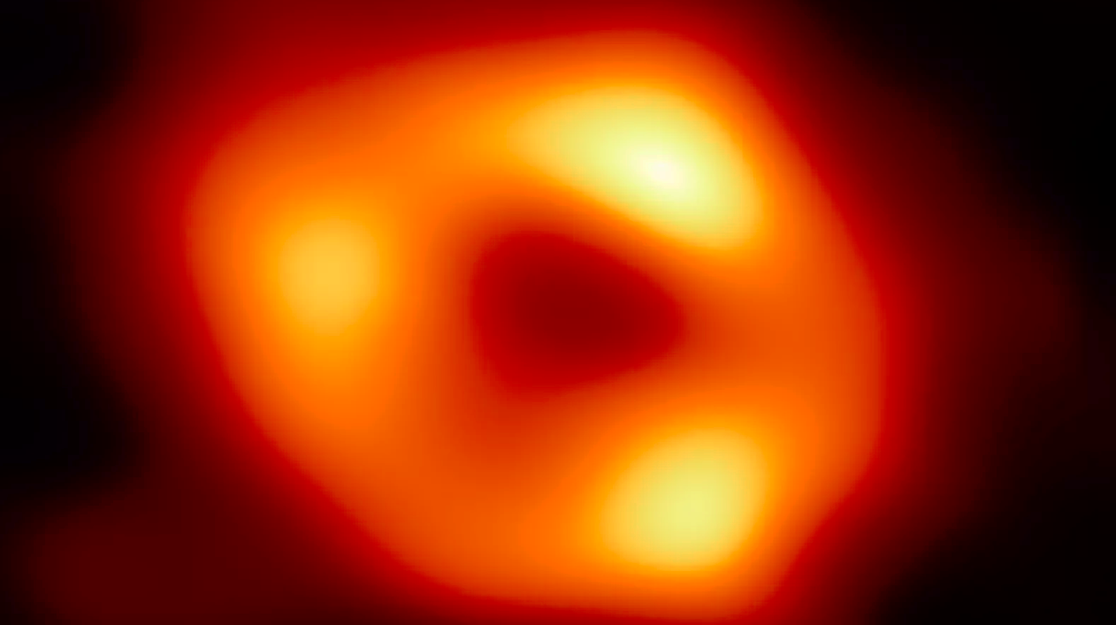 The first image of Sagittarius A*, or Sgr A*, the supermassive black hole at the center of the Milky Way. Source: Event Horizon Telescope Collaboration The first image of Sagittarius A*, or Sgr A*, the supermassive black hole at the center of the Milky Way. Source: Event Horizon Telescope Collaboration
Astronomers have captured the first image of the black hole at the center of the Milky Way, Axios Science author Alison Snyder reports. Why it matters: The “historic breakthrough” offers an unprecedented look at the extreme object driving the evolution of our galaxy. · Astronomers imaged Sagittarius A* (Sgr A*) using the Event Horizon Telescope. Most galaxies are thought to have a supermassive black hole at their center. · The false orange-yellow color in the image is the silhouette of the black hole created by matter teetering on its edge, or event horizon. · Light can’t escape a black hole, but hot plasma swirling around it emits short radio waves that radio telescopes can pick up. In the image, the gas silhouettes the black hole itself. |
ASTRONOMY & ASTROPHYSICS
1st image of our galaxy’s ‘black hole heart’ unveiled
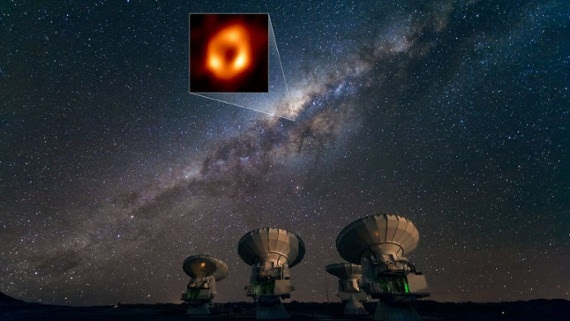 (ESO/José Francisco Salgado (josefrancisco.org), EHT Collaboration)
(ESO/José Francisco Salgado (josefrancisco.org), EHT Collaboration)
Astronomers have captured the first ever image of the colossal black hole at the center of our galaxy, providing the first direct evidence of the cosmic giant’s existence.
Located 26,000 light-years away, Sagittarius A* is a gargantuan tear in space-time that is four million times the mass of our sun and 40 million miles (60 million kilometers) across. The image was captured by the Event Horizon telescope (EHT), a network of eight synchronized radio telescopes placed in various locations around the world.
Full Story: Live Science (5/12)
BBC is a British public broadcast service.
Wikipedia
Supermassive black hole in Milky Way pictured for first time – BBC News – 5:53
May 12, 2022 BBC News
A supermassive black hole that lives at the centre of our galaxy, the Milky Way, has been pictured for the very first time. Known as Sagittarius A*, the object is a staggering four-million times the mass of our Sun. For scale, the ring is roughly the size of Mercury’s orbit around our star. Fortunately, this monster is a long, long way away – some 26,000 light-years in the distance – so there’s no possibility of us ever coming to any danger. The BBC’s Science correspondent Pallab Ghosh reports. Please subscribe HERE http://bit.ly/1rbfUog #BBCNews
A Picture of the Milky Way’s Supermassive Black Hole
May 12, 2022 Veritasium
This is an image of the supermassive black hole, Sagittarius A*, at the center of our Milky Way galaxy. Visit https://www.kiwico.com/veritasium30 to get 30% off your first month of any crate! ??? Image of Sgr A* from EHT collaboration Event Horizon Telescope collaboration: https://ve42.co/EHT Animations from The Relativistic Astrophysics group, Institute for Theoretical Physics, Goethe-Universität Frankfurt. Massive thanks to Prof. Luciano Rezzolla, Dr Christian Fromm and Dr Alejandro Cruz-Osorio. A huge thanks to Prof. Peter Tuthill and Dr Manisha Caleb for feedback on earlier versions of this video and helping explain VLBI. Great video by Thatcher Chamberlin about VLBI here – https://youtu.be/Y8rAHTvpJbk Animations and simulations with English text: L. R. Weih & L. Rezzolla (Goethe University Frankfurt) https://youtu.be/jvftAadCFRI Video of stars going around Sgr A* from European Southern Observatory https://www.eso.org/public/videos/eso… Video zooming into the center of our galaxy from European Southern Observatory https://www.youtube.com/watch?v=dXAU0… Video of observation of M87 courtesy of: C. M. Fromm, Y. Mizuno & L. Rezzolla (Goethe University Frankfurt) https://youtu.be/meOKmzhTcIY Video of observation of SgrA* courtesy of C. M. Fromm, Y. Mizuno & L. Rezzolla (Goethe University Frankfurt) Z. Younsi (University College London) https://youtu.be/VnsZj9RvhFU Video of telescopes in the array 2017: C. M. Fromm & L. Rezzolla (Goethe University Frankfurt) https://youtu.be/Ame7fzBuFnk Animations and simulations (no text): L. R. Weih & L. Rezzolla (Goethe University Frankfurt) https://youtu.be/XmvpKFSvB7A ??? Special thanks to Patreon supporters: Inconcision, Kelly Snook, TTST, Ross McCawley, Balkrishna Heroor, Chris LaClair, Avi Yashchin, John H. Austin, Jr., OnlineBookClub.org, Dmitry Kuzmichev, Matthew Gonzalez, Eric Sexton, john kiehl, Anton Ragin, Diffbot, Micah Mangione, MJP, Gnare, Dave Kircher, Burt Humburg, Blake Byers, Dumky, Evgeny Skvortsov, Meekay, Bill Linder, Paul Peijzel, Josh Hibschman, Mac Malkawi, Michael Schneider, jim buckmaster, Juan Benet, Ruslan Khroma, Robert Blum, Richard Sundvall, Lee Redden, Vincent, Stephen Wilcox, Marinus Kuivenhoven, Clayton Greenwell, Michael Krugman, Cy ‘kkm’ K’Nelson, Sam Lutfi, Ron Neal ??? Written by Derek Muller Animation by Ivy Tello, Mike Radjabov, Maria Raykova Filmed by Petr Lebedev
LIFE’S LITTLE MYSTERIES
Why do microwaves cook food so much faster than ovens do?
 |
| (FG Trade via Getty Images) |
You might love charred, broiled sirloin; crisp, oven-roasted veggies; or flaky, baked salmon, all of which generally require an oven. But when you are in a hurry or famished, you may turn to a faster cooking method, the hallmark of culinary convenience: the microwave.
The microwave has made it possible to nourish ourselves with cooked food in a matter of seconds. But how, exactly, does it work so much quicker than an oven?
Full Story: Live Science (5/2)
IN THE SKY
Black Moon solar eclipse looks otherworldly in stunning images
A rare solar eclipse Saturday (April 30) stunned viewers across Antarctica, the southern tip of South America, and the Pacific and Atlantic Oceans.
While much of the event took place in remote areas, live cameras on Earth and satellites in space allowed people around the world to witness the moon blocking as much as 64% of the sun. The eclipse happened during a Black Moon, which is the second new moon in a single month.
Full Story: Live Science (5/1)
Scientists discover bizarre ‘worm-like’ aurora stretching halfway across Mars
On clear Martian nights, long, snake-like ribbons of light may streak through the sky for thousands of miles. It’s a pretty sight, according to new observations from the United Arab Emirates Mars Mission (EMM) — and it represents a strange new type of aurora never seen before on any planet.
Auroras — also known on Earth as the southern or northern lights — occur when charged particles from solar wind collide with molecules in a planet’s atmosphere. Several different types of auroras have been detected on Mars, including planet-wide “diffuse auroras,” which glow faintly through the entire Martian sky during intense solar storms, as well as patchy “discrete auroras,” which only glow above certain spots of Martian crust thought to contain magnetized minerals, according to EMM.
This new type of aurora — which EMM researchers dubbed a “sinuous discrete aurora” — seems to be a strange mishmash of the others, the researchers said.
Full Story: Live Science (5/5)
IN THE SKY
Earliest documented aurora found in ancient Chinese text
 (Elena Pueyo via Getty Images)
(Elena Pueyo via Getty Images)
The earliest documented case of an aurora, the fleeting but brilliantly colored lights that sometimes illuminate the night sky, dates to the early 10th century B.C., a new study on an ancient Chinese text reveals.
The text describes “five-colored light” witnessed in the northern part of the night sky toward the end of the reign of King Zh?o, the fourth king of the Chinese Zhou dynasty. The exact dates of Zh?o’s reign aren’t known, but it’s likely that this “five-colored light” event happened in either 977 B.C. or 957 B.C., according to the study.
Full Story: Live Science (4/25)
YOUR HEALTH
World’s oldest person dies in Japan at age 119
Kane Tanaka of Japan, who was the world’s oldest living person, has died at age 119, according to news reports.
Tanaka was born on Jan. 2, 1903 and died on April 19, according to CNN.
According to Guinness World Records, Tanaka became the world’s oldest living person on Jan. 30, 2019 at 116 years and 28 days old. She held the title for three years, until her death last week.
Full Story: Live Science (4/26)
Ocean Action News
MAY 2022
With the month of May comes Mother’s Day, a special time to celebrate all the wonderful moms out there. Did you know our ocean has some stand-out moms, too? Dive in with us and take a look at some of the hardest working moms in the sea.










 Rose, Rhododendron, and John’s Sculpture in our garden, Spring May 2022
Rose, Rhododendron, and John’s Sculpture in our garden, Spring May 2022
I enjoy studying and reading about technology, realizing that many thousands of educated people around the world are busy working on different kinds of experiments and research to advance their projects. This in return, will help human kind to progress, and hopefully, we will be able to appreciate one another and keep us together as a human race.
Hopefully, we will be able to live together without wars all over the world, and be able to focus our attention to prevent global warming.
We may then realize that we are the care-takers keeping the world healthy for ourselves, younger generations, and all creatures on earth that cohabitant with us on this planet.
Ing-On Vibulbhan-Watts, Saturday, May 21, 2022, 9:45 PM
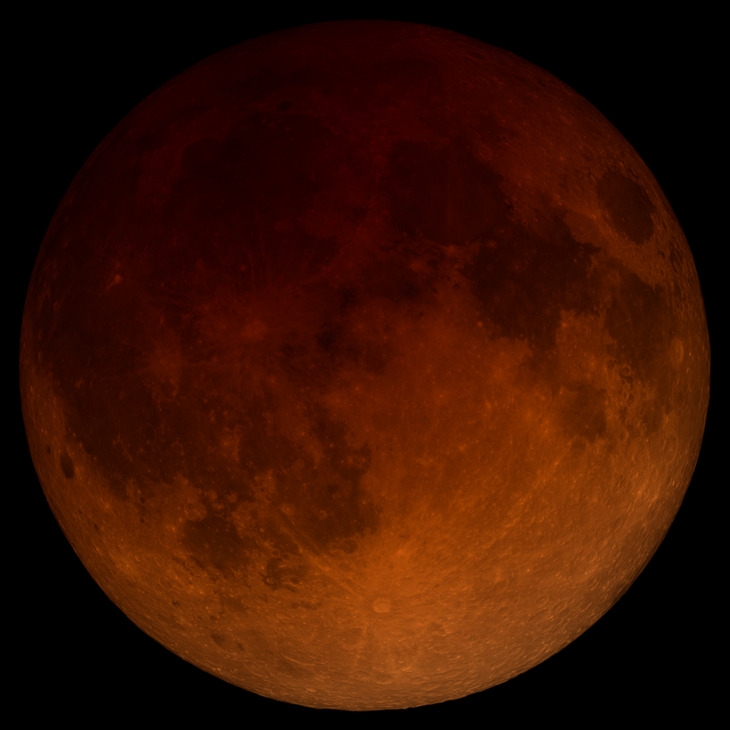
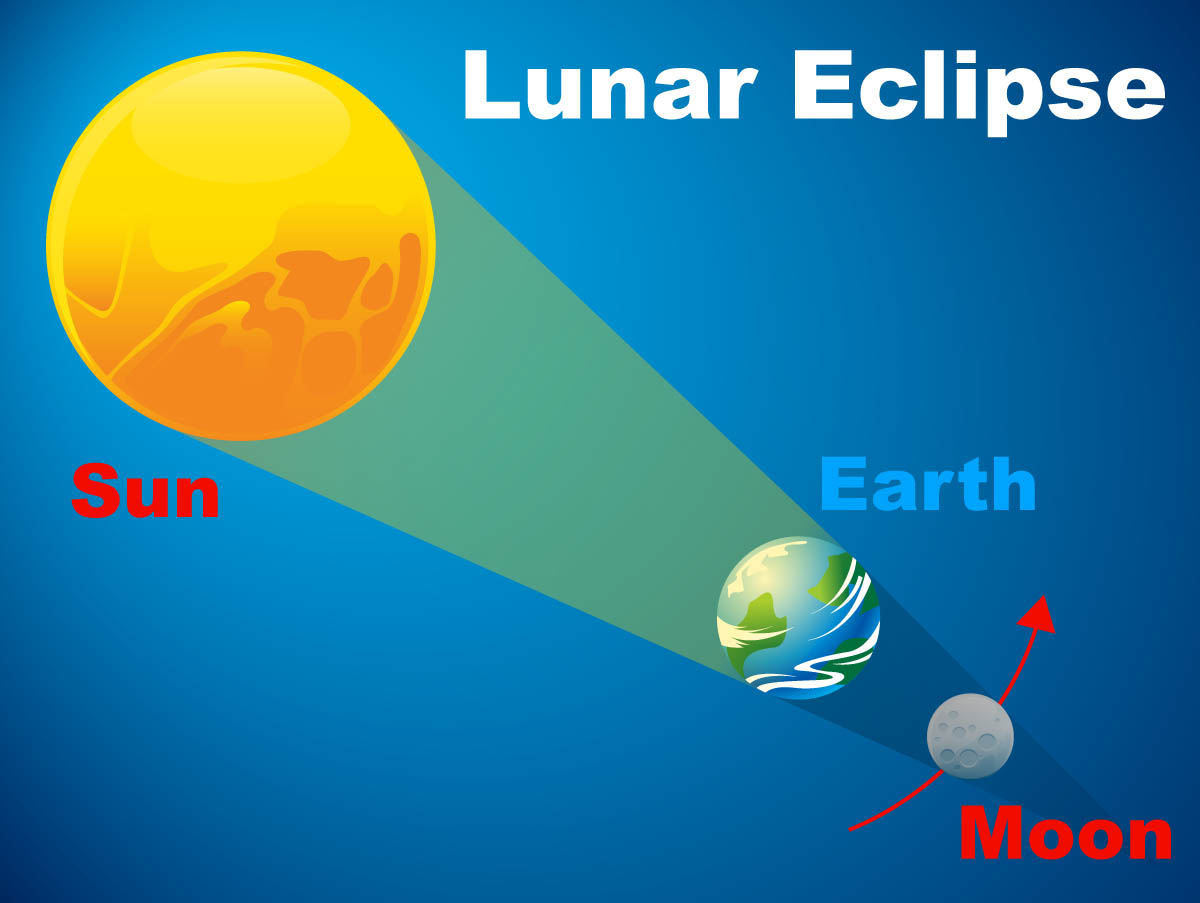

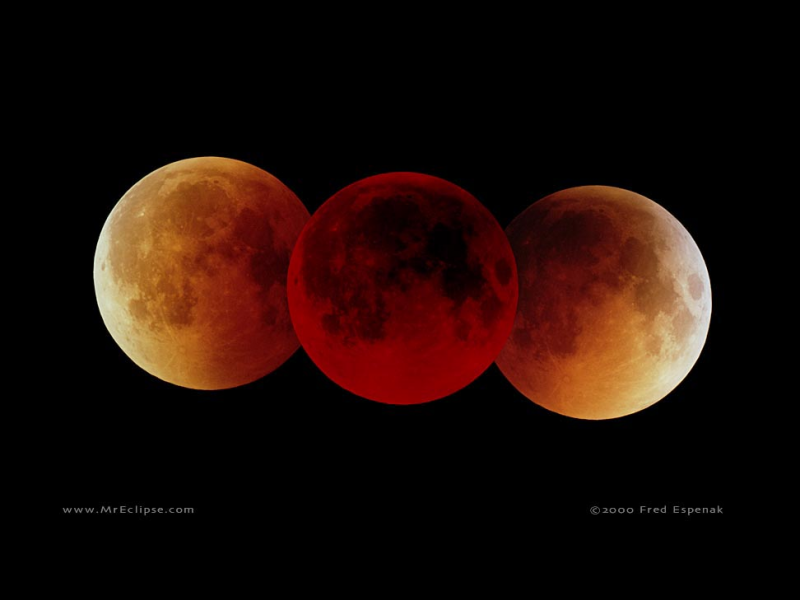
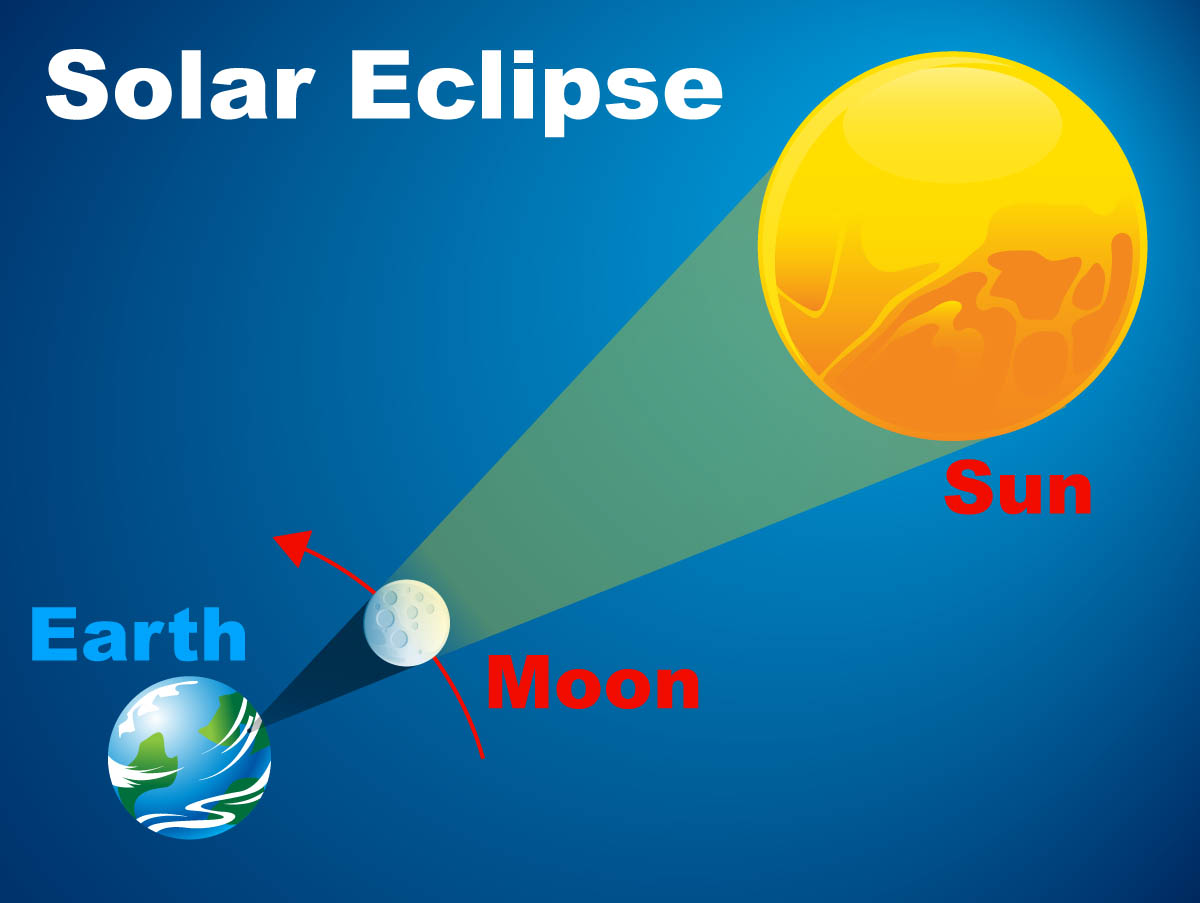

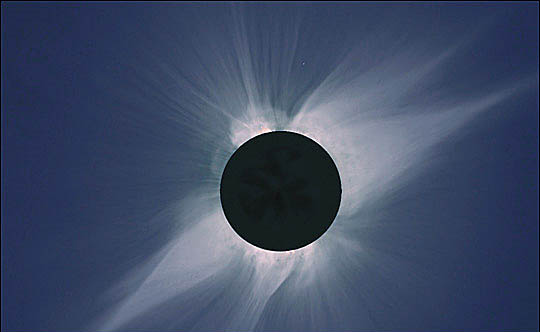
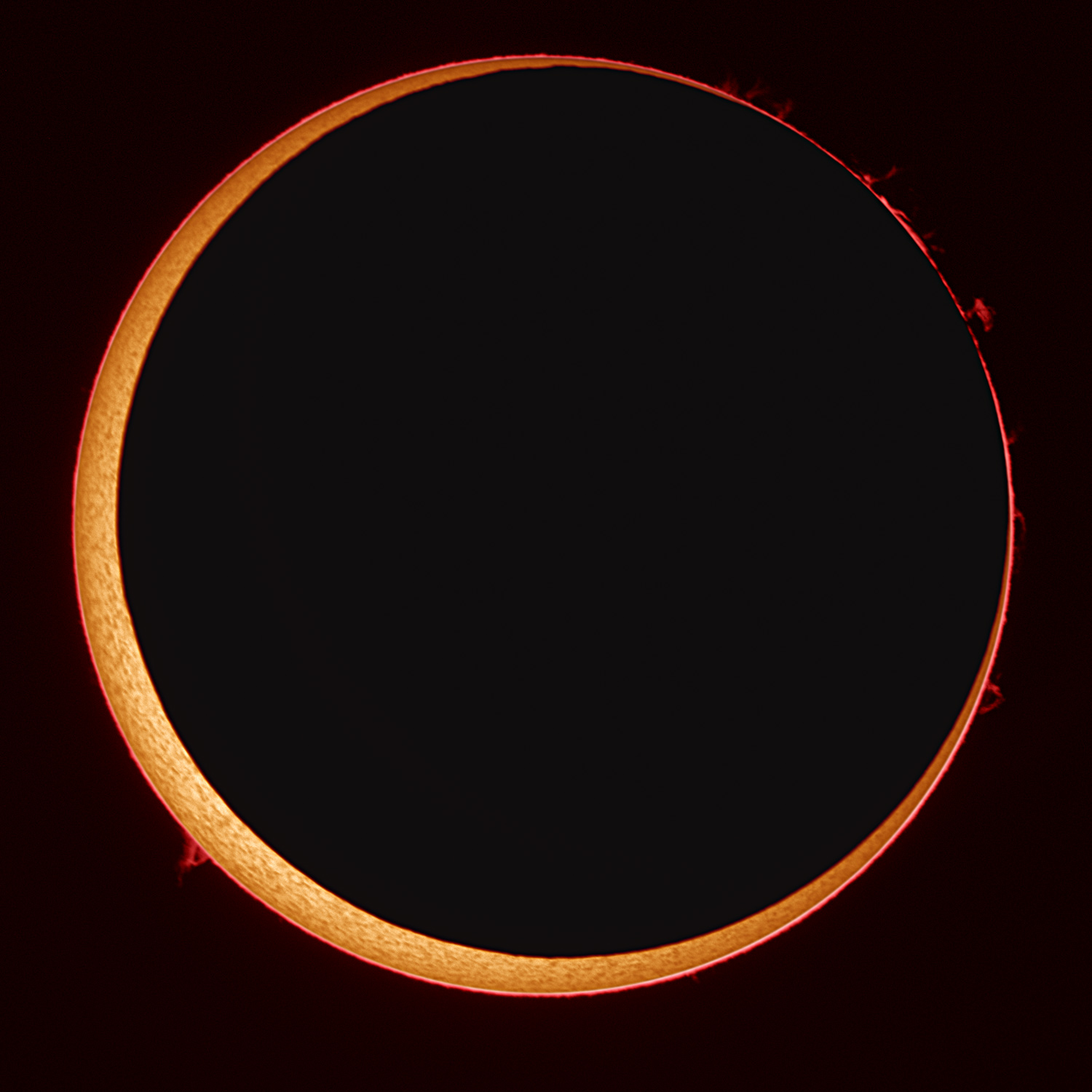

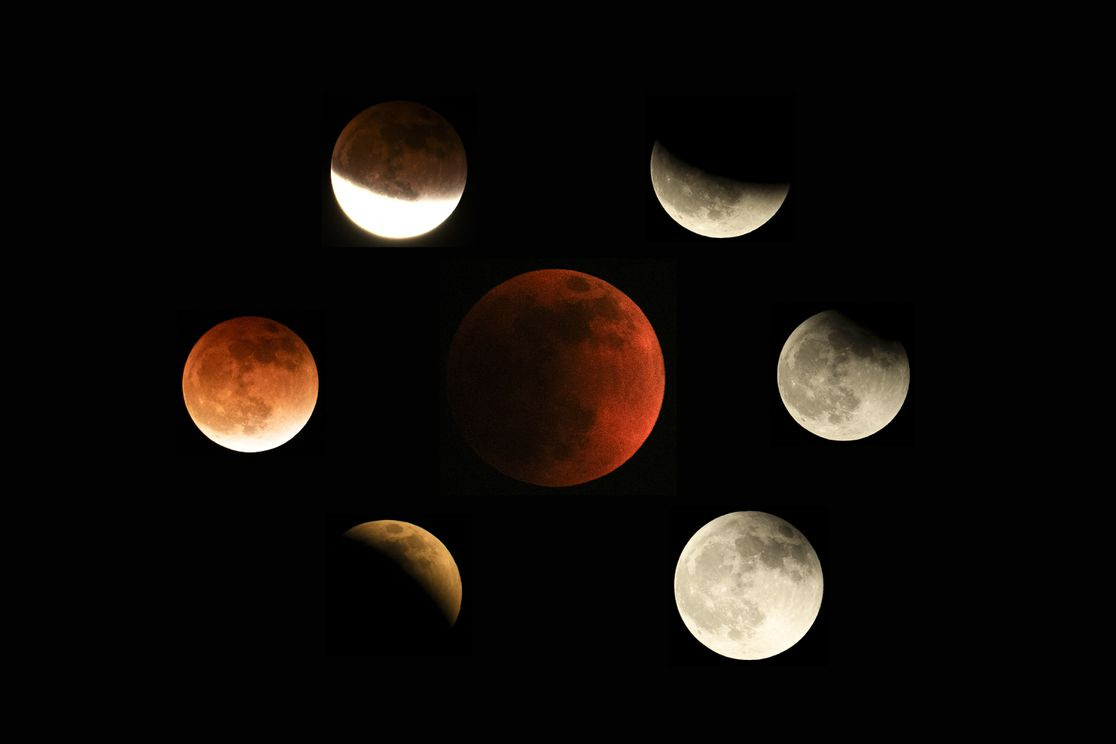
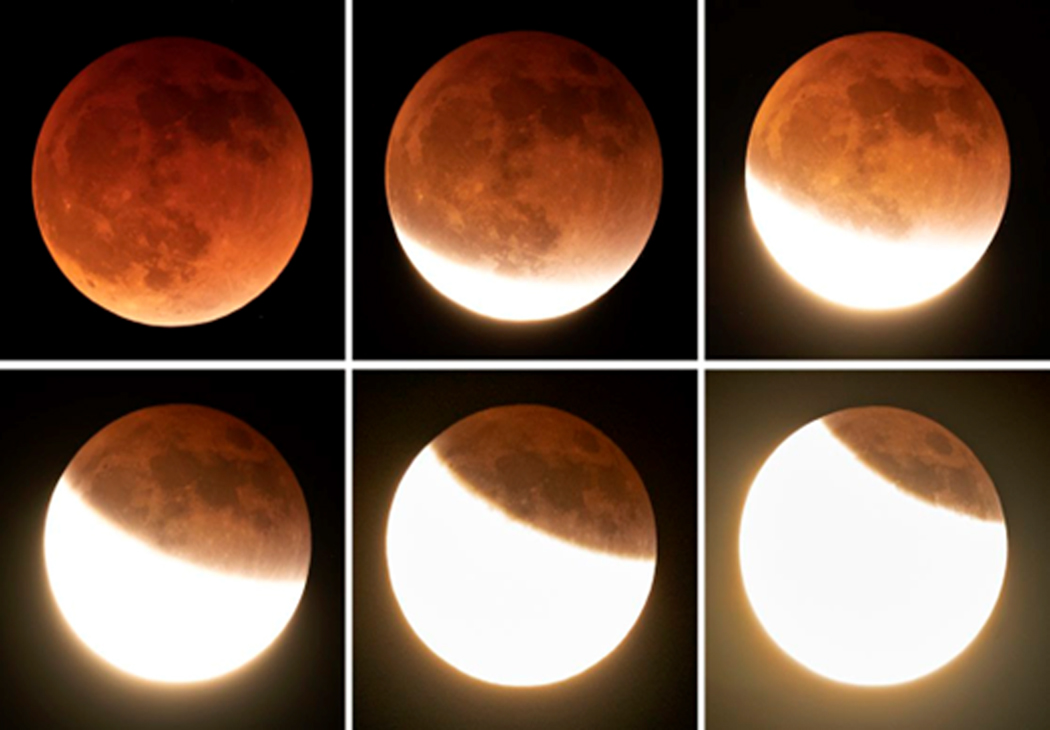

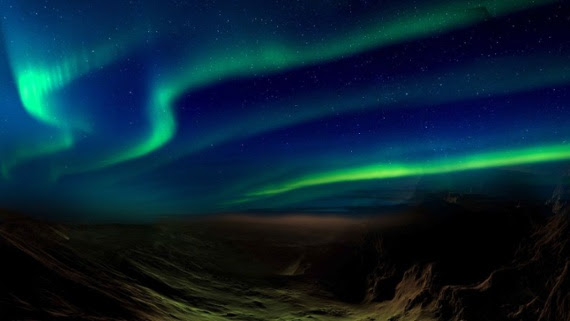


Leave a Reply